The Power of the Portrait - Part One
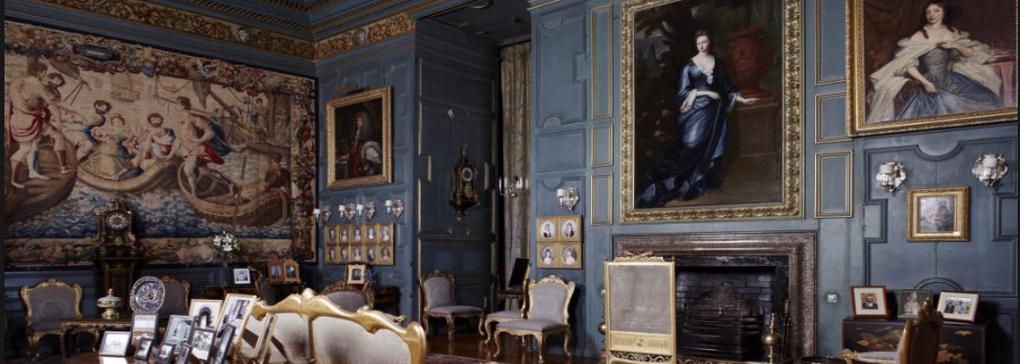
In the last few weeks Caroline has taken us to Bendigo to take in the Tudor exhibition– I am sure you were captivated by the photographic portrait of the Queen with her eyes closed. Anne also covered some of the Portraiture Competitions in Australia – The Archibald, Sulman and Wynne, giving artists a wonderful opportunity to showcase their styles.
Over the next two days Jane takes a look at the role and importance of portraiture over the centuries.
Portraiture is a very old art form going back at least to ancient Egypt, where it flourished from about 5,000 years ago. Prior to that, you could only see yourself as a reflection in a pond or perhaps a shiny surface.
Before the invention of photography, a painted, sculpted, or drawn portrait was the only way to record the appearance of someone. But portraits have always been more than just a record. They have been used to show the power, importance, virtue, beauty, wealth, taste, learning or other qualities of the sitter. (tate.org.uk).
Self-portraits have taken on a whole new meaning these days with the ease of taking selfies.
As you have seen in recent blogs, royalty, the aristocracy, famous, rich or just ordinary people want their portraits painted for their historical value or prestige.
An example that embodies many elements of a portrait, Australian born artist Ralph Heimans proposed a portrait of Queen Elisabeth II to mark her 60th Jubilee, which I had the joy to see at the National Portrait Gallery in Canberra in 2012.
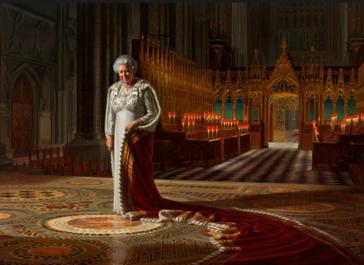
It's huge at 2.8m x 3.4m, as you can see below and shows the Queen in her beloved Abbey, in the Coronation Theatre before the High Altar, the lamps lit in the Quire behind her. She stands at the spot on which 38 British monarchs since 1066 have been crowned, near the circle on onyx at the centre of the recently restored 13th century mosaic called the Cosmati Pavement. On her shoulders lies the Robe of State, which she wore for her Coronation in 1953, and she wears diamonds that belonged to Queen Victoria. He has captured her expression, recalling her Coronation, and the weight of responsibility she would have felt on the day. (Credit: National Portrait Gallery).
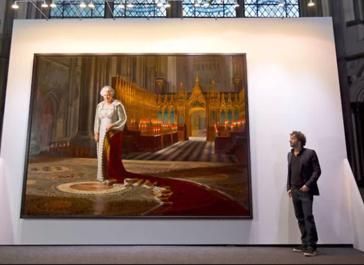
There is no better place to start with a study of portraits than Powis Castle known as the House of Portraits. The great halls and quiet chambers are full of pictures of real people. Ranging from majestic full-length portraits to intimate miniatures that can be held in the palm of your hand, they are the work of many talented artists.
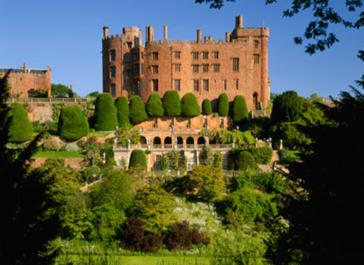
Some of these faces belong to kings, emperors and maharajas while the identity of others has long ago been lost and forgotten. But the overwhelming majority depict men, women and children of the Herbert family who have lived at Powis for over four centuries. Rooms were often built to enable several generations to be seen in a single glance.
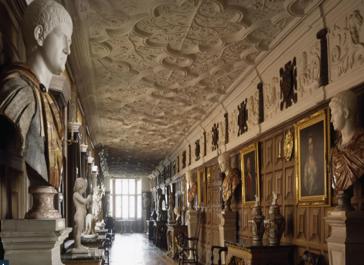
I’d like to share some of the knowledge about the many reasons for a portrait I gleaned when I visited Powis last year . Details are taken from the booklet House of Portraits – Powis Castle I purchased on the day.
To Capture Appearance – usually the basic function of a portrait is to detail the physical appearance at a moment in time or place; an accomplished artist would also express the sense of inner character. Below John Singer Sargent has portrayed Lady Violet Herbert in 1912, at a time when she was involved in renovating the house and gardens (as we see them today). This black charcoal sketch, suggests drama and spontaneity with a sense of dynamism.
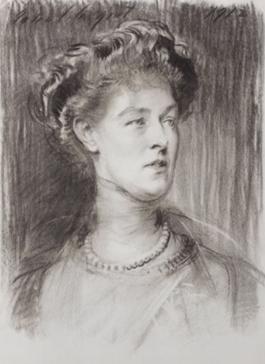
Family Portraits line the halls of Powis – not just as a sign of wealth and influence, but to express a pride in heritage; a child fixes a point in time and can carry hopes for the future. Many were painted by famous artists. When estates were divided, portraits tended to be kept together and among the last assets to be sold – perhaps at times when family finances dipped.
Some examples include Edward Clive as a child by Thomas Gainsborough c1762 and Lady Henrietta Herbert at age 19 by Joshua Reynolds 1777.
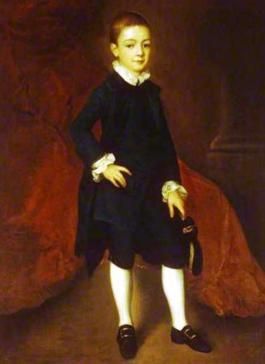
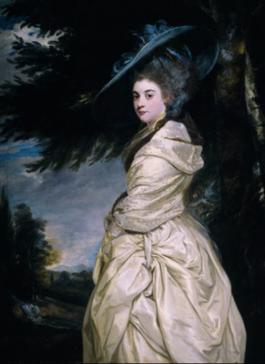
To attract – for high born young ladies a portrait wearing the latest fashions and an alluring expression was essential to attract the right suitor - Lady Henrietta Herbert's portrait above - demure yet tantalising.
Tomorrow we will continue with more on the Power of Portraits.
(Credits: Unless otherwise stated, notes are paraphrased and all photos taken from the booklet House of Portraits – Powis Castle by John Chu available at Powis Castle.
